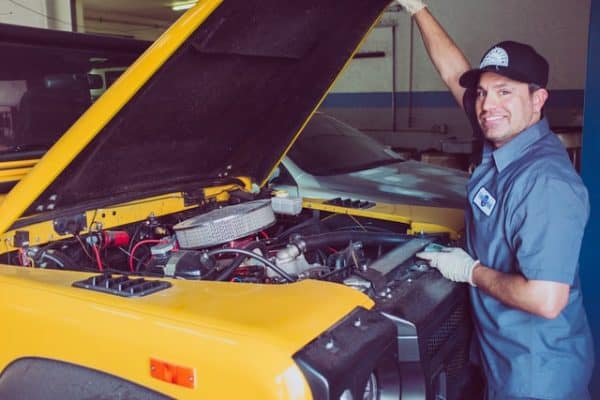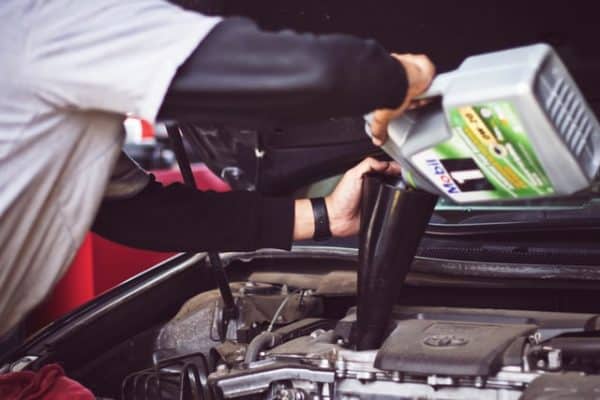
You may consider your car a high-mileage vehicle if you drive it beyond the average 12,000 to 15,000 miles per year. It may also qualify if it has gone over the 100,000-mile threshold. If your goal is to drive it for another 100,000 miles, you need to learn about the proper maintenance for high-mileage vehicles.
Before looking for ways to keep your car running longer, ensure that you cover your repair costs if accidents or breakdowns happen. Since your vehicle already has so many miles on it, the manufacturer’s warranty has most likely expired by now. Avoid these costs by getting extended warranty insurance, also called used car warranty.
Below are a few tips on properly maintaining high-mileage vehicles like yours.
1. Follow Your Car’s Maintenance Schedule
Proper maintenance means you need to stick to the car’s maintenance schedule. The goal of these sessions is to find areas or parts that you need to fix before they cause problems in the future. Examples are unaligned wheels, fluid leaks, or worn-out brake pads.
It may be tempting to skip a few of these sessions to save money, but you may risk spending more if your engine suddenly stops working in the middle of nowhere. Tire rotation, alignment checks, and brake inspections are some of the most common processes involved in preventive maintenance. If you hear different views on the maintenance schedule, your safest bet is to read the manufacturer’s manual.
2. Never Skimp on Parts and Fluids
By now, you already know that car repairs aren’t cheap and may even cost you a small fortune in worse cases. But don’t let the thought of cutting down costs push you to buy cheap car parts and fluids. Low-quality parts and fluids may cost you more because they could eventually damage your vehicle.
Using cheap parts and fluids may also cause you to lose your warranty if your provider finds out that the new repairs needed are for damage caused by low-quality parts. Always follow the manufacturer’s specifications for components and fluids to ensure the long-term reliability of your car.
3. Keep It Clean and Protected
You might find it a bother to clean your car regularly, but it’s also key to maintaining a high-mileage vehicle. As a car goes up in miles or years, it becomes more prone to rusting. Regular washing and waxing prevent rust buildup and protect the paint job. However, you may want to consider full detailing every other year.
Some people ignore a little dirt, but it can accumulate fast and cause the engine to clog. Gravel and sand can damage moving parts. When doing the cleaning yourself, use car wash soap instead of dishwashing soap. Although it can take out dirt and grime, dishwashing soap can affect the car paint. Avoid drive-thru car washes and choose places where people wash cars by hand and use a clean cloth for each vehicle.
You must also protect the car from the elements, such as rain, wind, direct sunlight, and bird droppings. Prioritize parking in covered spaces and avoid placing your vehicle under a tree. Falling branches may leave scratches, while leaves may get stuck between windshield wipers.
4. Change the Oil and Check on Fluids

Motor oil serves as the lifeblood of a vehicle, protecting the engine parts from heat and friction damage. According to the AAA, cars driven in normal operation need an oil change every 5,000 to 7,000 miles.
Those used in severe services, like extreme weather conditions and sustained stop-and-go driving, require an oil change every 3,000 miles. Meanwhile, vehicles with engines designed for full-synthetic oil may go as far as 15,000 miles without an oil change.
Aside from oil, you must also regularly check on other fluids, including transmission fluid, coolant, power steering fluid, and brake fluid. Always ensure that they are at the correct levels and top up those you find below the normal level. If you discover an unusually low fluid level, check for leaks.
5. Don’t Forget About Your Battery and Tires
The car’s battery is one of the most easily neglected parts of a vehicle, even for high-mileage ones. Sometimes, you’ll only think about the battery if your car suddenly fails to start. Long periods of unuse could cause the battery to degrade or die out. Avoid getting a flat battery by taking your car for a spin at least once a week.
Make cleaning your battery a part of your washing routine. Use a non-metal brush to remove signs of corrosion on the battery and its wires using a baking soda and water mixture. Keep the battery’s electrolyte level at around 0.5 inches deep. Top up with distilled water if necessary.
Another easily forgettable part is the tires, but it’s one of the most important to a car’s performance. Keep your tires properly inflated to maintain high fuel efficiency and prevent premature wear and tear to the vehicle.
Bonus Tip: Drive Smoothly
Avoid driving aggressively and recklessly because bad driving habits like sudden accelerations and hard braking could cause long-term damage to your car. Only do these things in emergency cases or when avoiding collisions. Remove unnecessary items from your vehicle, particularly the trunk, to lessen its load.
The Bottom Line
These tips are only a few of the best practices you may apply to your car to prolong its service life. In the end, you’ll be the one deciding which ones to follow or not. The important thing is that you acknowledge the need to take better care of your vehicle.
 Gearfuse Technology, Science, Culture & More
Gearfuse Technology, Science, Culture & More


